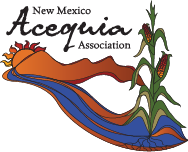- ISC 90-10 Program: The Interstate Stream Commission (ISC) administers the 90-10 program
(formerly the 80-20 program) funded by an annual, recurring appropriation of $1.9 million from the
Irrigation Works Construction Fund (IWCF) to the ISC. Acequias can obtain funding 90% cost share
for engineering design and construction. The ISC on an annual basis awards funds to acequias based
on their readiness to proceed.
- Other ISC Statewide Appropriations: In 2013, the State Legislature made a special appropriation
of $2 million to the ISC for “acequia projects statewide.” Of that $300,000 was set aside to assist
acequias with engineering designs and $1.7 million was set aside for construction projects. The ISC
administered an application process and 15 shovel ready acequia projects were approved for
construction funding.
- NRCS RCPP Program: Funded by the 2015 Farm Bill, the Resource Conservation Partnership
Program (RCPP) provides federal funding through EQIP and other conservation programs through
regional partnerships. In New Mexico, RCPP partnership includes the New Mexico Association of
Conservation Districts (NMACD), the Interstate Stream Commission (ISC), the New Mexico
Acequia Association (NMAA), and several local soil and water conservation districts. The
partnership through NMACD receives the federal money and distributes it to acequias through an
application process in which projects are ranked to determine their readiness to proceed. $1.2 million
was awarded to the partnership in 2015 and $3 million in 2016.
- NRCS Acequia Initiative: Also funded by the Farm Bill and available through an initiative by the
New Mexico NRCS office, the NRCS Acequia Initiative includes funding set aside at the state level
by the State Conservationist. The current initative has $500,000 in available funding from EQIP.
- Local SWCD Programs: Some Soil and Water Conservation Districts, including Taos and Easter
Rio Arriba, have allocated a set aside at the local level for local acequia projects. Each has their own
local application process and is subject to approval by the local SWCD board of supervisors.
- Water Trust Board: The Water Trust Board allocates funding through a competitive application
process for water conveyance, flood control, environmental, and watershed projects. The amount
available per year depends on the amount of severance tax bonds sold by the state (about 10% of the
total STBs goes to the WTB). The WTB allocated $200,000 out of the Acequia Project Fund for
engineering designs but that fund is nearly depleted. Few acequias have received funding through the
primary pool of water funds, which on a good year could be about $30 million.
- Local Acequia Funds: Acequias can assess their members to help pay for infrastructure repairs or
improvements. These assessments can be a set aside from a regular annual assessment or they can be
a one-time assessment for a specific project.
- Capital Outlay: The State Legislature annually approves a Capital Outlay bill which is subject to
veto by the Governor. Capital Outlay funds originate with Severance Tax Bonds sold by the state
based on increases in oil and gas revenue. The amount varies widely from year to year.
Appropriations are made for both statewide projects and local projects, which tend to be funded by
individual legislators with their respective “piece of the pie.” Acequia capital outlay appropriations
range from $10,000 to about $150,000. In recent years, with the exception of 2016, the total amount
given to acequias in aggregate has ranged from about $1 to $2 million per year.
- Army Corp of Engineers: Congress may include in annual appropriations funding for the Acequia
Program at the Army Corp. These are typically large scale projects from $1.5 to $3 million projects.
The Army Corp will handle all aspects of the project from assessment, design, and construction. In
the past, such projects have been subject to a 75% Federal, 17.5% State, and 7.5% Local cost share
where Capital Outlay has been an allowable source for the acequia cost share.

